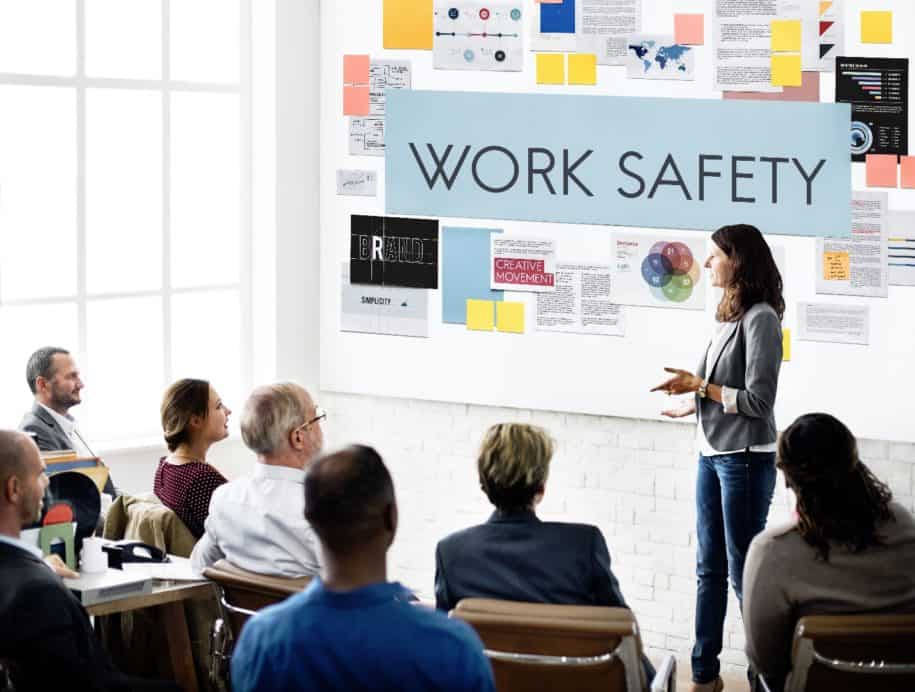As discussed in the previous article, the Purpose of Workplace Safety Inspections and Safety Observations , virtually every workplace conducts some form of periodic worksite safety inspections. This process is a typical component of a comprehensive health and safety plan. The purpose of an observation process was discussed (the why), but how the program is structured was not. In this article, we will discuss the ‘how’. First, the basic framework to support – a documented system for routinely scheduled self-inspections of the workplace. The system should contain the following components:
- Develop a documented system for routinely scheduled self-inspections of the workplace, including a tool or checklist
- Specify a recurring inspection schedule
- Train members of the inspection team(s)
- Document finding details including priority, assign responsibility for correction, establish timeframes for correction, and follow up to ensure total abatement
- Share information and seek supervisor and worker input for a suggested plan of action
- Develop a plan for conducting an analysis of observation information for the purpose of establishing or detecting trends, planning, and setting goals
While each of these topics deserves a full article of its own, let us dive into the fundamentals of these components of a comprehensive framework for an inspection and observation program.
- For inspections and observations, a shared set of checklists are the primary method to ensure both consistency and efficacy for a documented system. As mentioned in his book, The Checklist Manifesto, Atul Gawande shares these words of wisdom: “It is common to misconceive how checklists function in complex lines of work. They are not comprehensive how-to guides, whether for building a skyscraper or getting a plane out of trouble. They are quick and simple tools aimed to buttress the skills of expert professionals.” (Gawande, 2011)
- An inspection schedule should ensure that the observation process covers everything systematically. This means addressing who does observations (observers), where those observations occur (location), when those observation occur (schedule) and what is being observed (group or equipment or hazard). The object is to leave no stone unturned. It is up to the organization to review their business to determine what the best frequency would be.
- Next, training is mandatory. Of course, training should be done in the recognition and avoidance of hazards in the work environment. However, ‘soft’ skills, such as coaching and feedback, are necessary to interact with others and to successfully carry out the observation process competently. Assigning a person as an observer should be more than a hand wave. Care and effort should be taken to build up both the knowledge and the demonstration of both technical and social skills.
- OSHA has a saying: “If it’s not documented, it didn’t happen”. The observation system must document finding details including priority, assign responsibility for correction, establish timeframes for correction, and follow up to ensure total abatement. This foundational component of an overall framework is necessary for several reasons. First, it allows full transparency and visibility into the communication of hazards, the risk, and the subsequent mitigation efforts. Second, it establishes accountability to ensure hazards are addressed in a timely manner. Lastly, having a digitized system of recordkeeping aids in communication of progress to both management and the workers.
- Communication is a two-way street. An observation program should involve all levels of the workforce. Everyone should have a responsibility to report hazards as found. Management should provide the necessary resources to address hazards. Both managers and workers should have a hand in how best to create a plan of action to address systemic findings. This can be done using various means such as a safety committee and even through learning teams.
- A good observation program should go beyond finding and fixing hazards. The process of observing and documenting findings, both positive and those in need of improvement, should drive conversations. The frequency and quality of these conversations and feedback are pivotal in the success of establishing a continuous improvement process. Analysis of recurring trends allows for the program to become elevated and produce actionable insights that go beyond a whack-a-mole hazard hunt. A robust analytical program can aid in identifying systemic and recurring issues.
It is important to build a foundation upon which a safety inspection and observation program can be successful. Just like the procedures and steps necessary to safely navigate the control of hazardous entry or entry into a confined space, a detailed listing of the purpose and methods aids those conducting inspections and performing observations navigate competently and purposefully. Ideally, those trained to inspect understand both why it is done as well as how it is done.
For more details: Click here & Contact SafetyStratus Now
AUTHOR BIO

Cary comes to the SafetyStratus team as the Vice President of Operations with almost 30 years of experience in several different industries. He began his career in the United States Navy’s nuclear power program. From there he transitioned into the public sector as an Environmental, Health & Safety Manager in the utility industry. After almost thirteen years, he transitioned into the construction sector as a Safety Director at a large, international construction company. Most recently he held the position of Manager of Professional Services at a safety software company, overseeing the customer success, implementation, and process consulting aspects of the services team.
At SafetyStratus, he is focused on helping achieve the company’s vision of “Saving lives and the environment by successfully integrating knowledgeable people, sustainable processes, and unparalleled technology”.
Follow @cary: Linkedin | Twitter
References
Gawande, A. (2011). The checklist manifesto: how to get things right. New York: Henry Holt.
OSHA Challenge – Construction Track Site OCTPS Form Instructions. (n.d.). Retrieved June 8, 2020, from https://www.osha.gov/sites/default/files/challenge_ocpts_final.pdf
OSHA Challenge – General Industry Track Site OCTPS Form Instructions. (n.d.). Retrieved June 8, 2020, from https://www.osha.gov/sites/default/files/challenge_ocpts_gi.pdf



